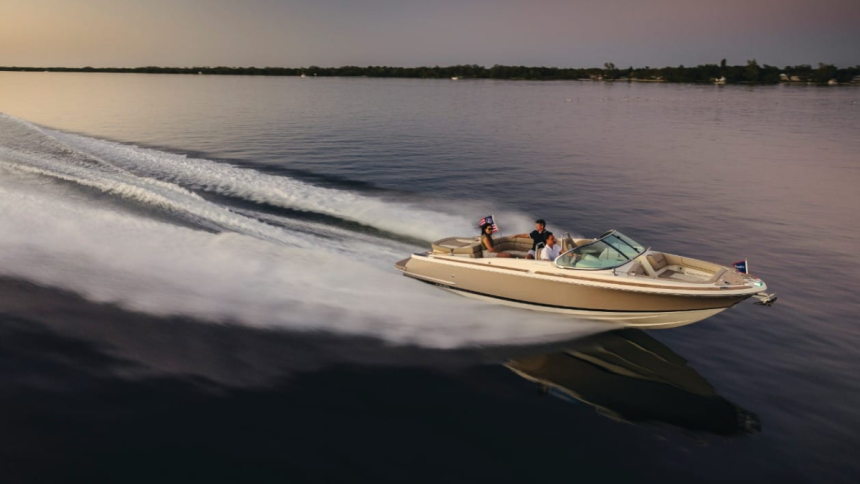Marine technology has come a long way from analog gauges and paper charts. Today’s watercraft are smarter, more connected, and better equipped to deliver seamless onboard experiences. The trend toward automation, digital monitoring, and app-controlled systems is reshaping not only how vessels operate—but how boaters interact with their craft.
One of the central drivers of this evolution is the rise of smart boat solutions. These systems combine advanced electronics, software integration, and intuitive controls to transform traditional boats into intelligent vessels that enhance safety, efficiency, and enjoyment on the water.
What Defines a “Smart Boat”?
A smart boat goes beyond mechanical performance—it communicates, responds, and adapts. Whether you’re managing systems from your phone, monitoring real-time engine diagnostics, or receiving alerts about weather conditions, smart boating is all about connectivity and control.
Features commonly found in smart boats include:
- Centralized touchscreen helm interfaces
- Cloud-synced engine data and diagnostics
- Wireless lighting, climate, and bilge controls
- GPS-integrated route planning and navigation
- Mobile app access for remote control and monitoring
These capabilities are making boats more similar to smart homes—only they float and handle 6-foot waves.
The Boater’s Experience: Simplicity Meets Power
In the past, even seasoned boaters had to juggle a dozen different systems. Navigation, radar, engine management, and electrical controls were often separate, requiring manual checks and scattered inputs. Now, a single interface can handle them all.
With smart boat, operators can:
- Check battery voltage and fuel levels before leaving home
- Turn on lights or air conditioning remotely
- Get real-time alerts about mechanical issues or intrusions
- Track the vessel’s location when it’s moored or on charter
This not only saves time but improves peace of mind—especially for boat owners who aren’t always on-site.
Enhancing Safety Through Connectivity
Safety at sea is non-negotiable. Smart systems now integrate with marine safety protocols to help prevent accidents and respond to emergencies.
Examples include:
- Geo-fencing alerts when the vessel drifts beyond a designated zone
- Overboard alerts using wearable tracking for passengers or crew
- Engine shutdown features triggered by water ingress sensors
- Immediate transmission of distress signals with coordinates
These features are especially beneficial for families, rental operators, or vessels running with minimal crew.
Predictive Maintenance and Fuel Efficiency
Smart boating isn’t just about convenience—it’s about smarter operations. Integrated systems can analyze engine performance trends, alert you to worn parts before they fail, and even help optimize your fuel usage by adjusting engine load or route recommendations.
For fleet operators or frequent cruisers, this means fewer surprises, reduced downtime, and more efficient long-term operation.
Seamless Integration With Mobile Devices
Modern boaters expect mobile convenience, and smart systems deliver. Through a smartphone or tablet, users can now:
- Monitor dock power connections
- Adjust entertainment settings
- Start engines or generators
- Get weather updates and tide data
Many systems also support push notifications, so you’re instantly informed if someone boards your vessel or if bilge water exceeds safe limits.
Supporting Multiple Users and Use Cases
Smart boat technology is flexible enough to support multiple user types:
- Charter companies can manage guest access, track usage, and perform diagnostics remotely
- Boat clubs can automate systems for shared usage while maintaining member-level permission
- Private owners can configure profiles for family, friends, or staff with varying levels of control
This level of granularity was nearly impossible just a few years ago and marks a big leap forward in boat security and convenience.
Future-Forward Features Already on the Horizon
As technology continues to advance, we can expect more features such as:
- AI-driven route optimization based on weather, tides, and fuel goals
- Voice command integration with helm systems
- Augmented reality overlays for navigation
- Self-docking automation using sonar and camera guidance
These aren’t distant dreams—they’re already being tested and integrated by forward-thinking marine technology providers.
The Sustainability Factor
Today’s smart systems also support greener boating practices. Efficient energy use, automatic battery balancing, and solar integration all contribute to reducing a vessel’s carbon footprint. Smart propulsion monitoring can also help avoid excessive emissions, especially important for operations in sensitive marine ecosystems.
Technology That Elevates the Journey
Smart boats are no longer futuristic—they’re here, and they’re changing the game for weekend boaters and professionals alike. With intelligent, integrated systems that empower you to monitor and manage every aspect of your vessel, you get more than convenience—you get a completely enhanced boating experience.
Lynn Martelli is an editor at Readability. She received her MFA in Creative Writing from Antioch University and has worked as an editor for over 10 years. Lynn has edited a wide variety of books, including fiction, non-fiction, memoirs, and more. In her free time, Lynn enjoys reading, writing, and spending time with her family and friends.















